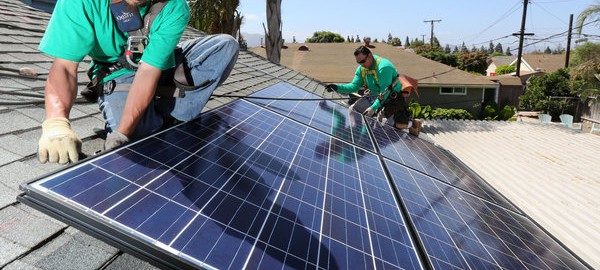For years, homeowners who bought solar panels were advised to mount them on the roof facing south. That captures the most solar energy over the course of the day, which benefits the homeowner, but does so at hours that are not so helpful for the utility and the grid as a whole.
Mount them to catch the sunlight from the west in the afternoon, and the panels’ production over all would fall, but it would come at hours when the electricity was more valuable.
But that idea is slow to take hold. A new study of 110,000 California houses with rooftop solar systems confirmed that a vast majority of the panels were pointed south because most of the panel owners were paid by the number of kilowatt-hours the panels produced. Pointing them southward maximizes production over all, but peak production comes at midday, not in late afternoon, when it would be more helpful.
In late afternoon, homeowners are more likely to watch TV, turn on the lights or run the dishwasher. Electricity prices are higher at that period of peak demand.
“The predominance of south-facing panels may reflect a severe misalignment in energy supply and demand,”
said the authors of the study, Barry Fischer and Ben Harack. They work for Opower, a company that provides software that electric companies can use to manage their relationships with their customers.
Houses with solar systems consume less than half as much utility-delivered electricity as ordinary houses, the study found. But from about 4 p.m. through the night, they consume more, and they add to the system’s peak demand, which comes around 5 p.m.
Pointing panels to the west means that in the hour beginning at 5 p.m., they produce 55 percent of their peak output. So a 10-kilowatt system would make 5.5 kilowatts. But point them to the south to maximize total output, and when the electric grid needs it most, they are producing only 15 percent of peak, or 1.5 kilowatts.
Why wouldn’t everyone point the panels west? Some homeowners have their panels face south because that is the direction of the roof. While some solar panel owners are paid time-of-use rates and are compensated by the utility in proportion to prices on the wholesale electric grid, many panel owners cannot take advantage of the higher value of electricity at peak hours because they are paid a flat rate, the energy analysts said. So the payment system creates an incentive for the homeowner to do the wrong thing. The California Energy Commission recently announced a bonus of up to $500 for new installations that point west. A new solar installation is completed every 3.2 minutes, according to the authors of the analysis.
Solar panels do not have to be pointed in just one direction; a homeowner can buy a device called a tracker that will pivot them, over the course of the day, like a sunflower, so they always face the sun. A tracker can raise the output of a panel by 45 percent. But adding trackers can cost hundreds or thousands of dollars, and a cheaper way to get the same number of kilowatt-hours may be simply to buy a few extra panels.
Houses with solar panels are not necessarily efficient; during the hours when the sun is not shining, they use more electricity than houses without solar panels. It may be because the bigger users tend to install the panels in the first place. There may be another reason: People who own electric cars tend to also install solar panels, and their overall electricity consumption is higher. But from an environmental standpoint, it is still better to consume the energy as electricity rather than as gasoline.
Source: New York Times
